Each of these museums has diligently curated collections that span generations, continents, and artistic styles. From traditional African art to contemporary mixed media, these museums offer an immersive experience, honoring the historical legacy and ongoing contributions of Black artists to the global artistic landscape.
Through the power of visual storytelling, these museums provide a view into the triumphs, dreams, and aspirations of Black artists across different time periods and regions. As you explore the exhibits of these 10 must-see museums, you will witness the transformative power of art and the universality of human emotions. By sharing these remarkable institutions, we hope to inspire all levels of art enthusiasts and collectors to embark on a journey of discovery.
As you can imagine, given the many fabulous museums throughout the world, whittling the list to just 10 was no easy task. The following museums are listed in no particular order.
Now let’s get out there and explore!
Virginia
1. The Hampton University Museum
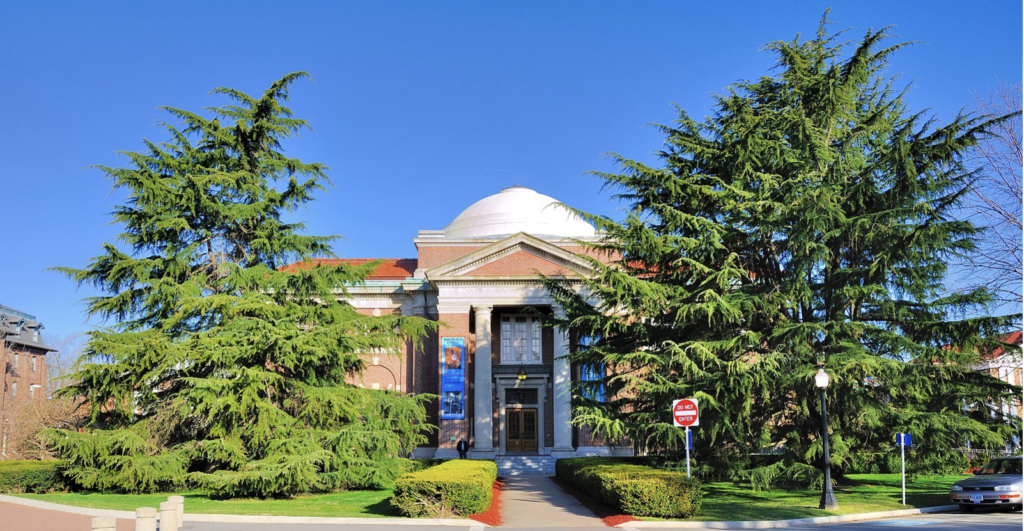
Photo by Douglas W. Reynolds, Courtesy of Creative Commons
1868! Yes, that’s when the first African American museum was established. The Hampton University Museum in Virginia is located on the campus of Hampton University. This is just one of many Museums/Galleries at HBCU’s (Historically Black Colleges and Universities).
In 1911, the school was the recipient of hundreds of African artworks from Hampton University alumnus William Sheppard. Sheppard was first Westerner to enter the Kuba Kingdom of Africa. The William H.Sheppard collection at the Hampton University Museum is the oldest collection of Kuba related material in the world.
As part of The Museum’s impressive fine arts collection you’ll find the world’s first institutional collection of African American fine art, with two paintings by Henry O. Tanner, including The Banjo Lesson as well as artworks from the Harlem Renaissance. The Museum’s collection of contemporary artists includes Romare Bearden, Sam Gilliam, Murry DePillars, Richard Mayhew, Moe Brooker, Raymond Saunders, David MacDonald, Ron Adams, Sonya Clark, James Phillips, and Margo Humphrey.
Interesting Fact: In addition to an impressive collection of works by African American artists, the Hampton University Museum also houses one of the most impressive collections of multicultural art in America, where you’ll also find American Indian, Asian, and Pacific art and artifacts.
New York
2. The Studio Museum in Harlem in New York City

Photo by Americasroof, Courtesy Creative Commons
The Studio Museum in Harlem was founded in 1968 by a group of artists, activists, and community leaders who not only wanted to create a space for black artists to showcase their work but to also connect, strengthen, and support artists and their community. The Museum showcases artists of African descent as well as work that has been inspired and influenced by Black culture. The Museum’s vast collection includes works of art including paintings, sculptures, and multimedia installations with works by celebrated artists, such as Romare Bearden, Jacob Lawrence, and Jean-Michel Basquiat.
The Studio Museum’s lauded Artist-in-Residence program envisioned by artist William T. Williams, has been in place since 1968. The annual 11-month residency has propelled the career of its emerging artists of African and Afro-Latinx descent. The comprehensive residency includes, studio space, professional development, a stipend and an annual group exhibition. Alumni of the iconic program include “some of today’s most significant and innovative artists, such as Njideka Akunyili Crosby, David Hammons, Titus Kaphar, Simone Leigh, Kerry James Marshall, Julie Mehretu, Wangechi Mutu, Mickalene Thomas, and Kehinde Wiley.”
The museum is entering an exciting new phase in its history with a brand new 82,000-square-foot building currently under construction! Designed by Adjaye Associates with Cooper Robertson, the new building design takes inspiration from the historic brownstones and churches of Harlem. The new building will occupy the site on West 125th Street on which the Studio Museum had been operating since 1982. During construction the Museum has, shifted its programming to partner sites throughout Harlem and beyond.
Interesting fact:
While in the Tristate area of New York check out: Brooklyn Museum, Museum of Modern Art (MoMA), Metropolitan Museum of Art (The Met), Guggenheim, Museum of Contemporary African Diasporan Arts (MoCADA)
California
3. The Museum of the African Diaspora in San Francisco
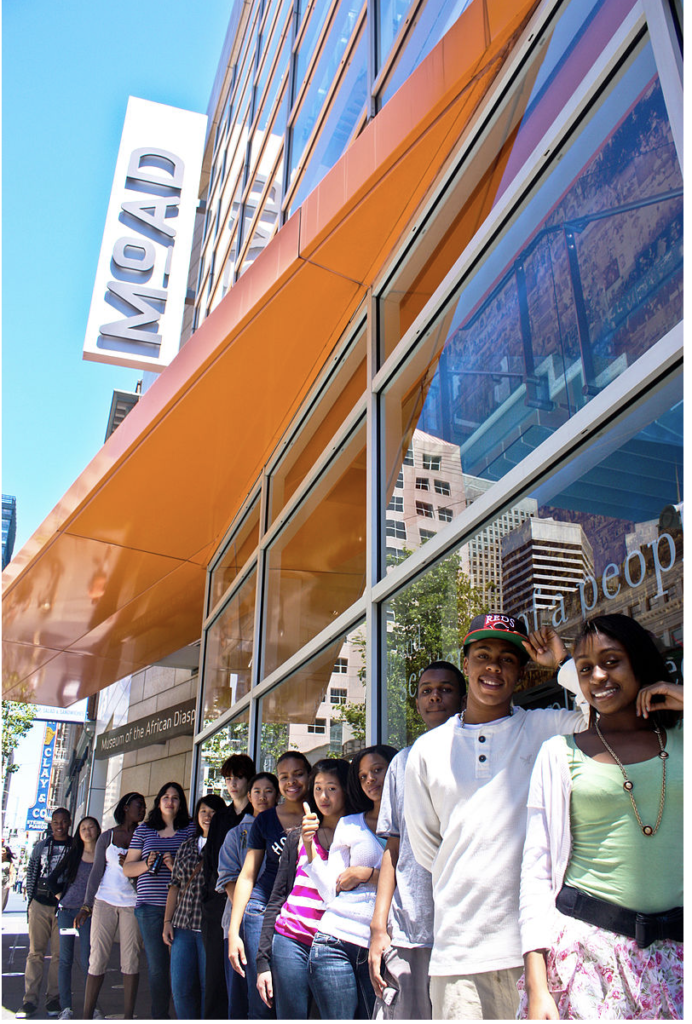
Photo by www.moadsf.org Courtesy of Creative Commons
Playing a vital role in the local arts community, The Museum of the African Diaspora (MoAD) is a contemporary art museum located in San Francisco and was founded in 2005. MoAD, “celebrates Black cultures, ignites challenging conversations, and inspires learning through the global lens of the African Diaspora.”
Central to the Museum’s goal is to tell stories and share experiences. They focus on representing underrepresented work and presenting challenging conversations. They also have a range of public programs that celebrate the impact of individuals, cultures, and nationalities of African descent on various artistic and cultural pursuits.
In addition to art exhibitions the museum also offers community enrichment programs, including book & film clubs, artist & author talks, residencies & awards.
Interesting Fact: As a Smithsonian affiliate MoAD works in collaboration with the Smithsonian to catalyze critical conversations in their communities, introduce issues of historic and contemporary importance, and help their audiences to better understand the world around them.
4. The California African American Museum in Los Angeles
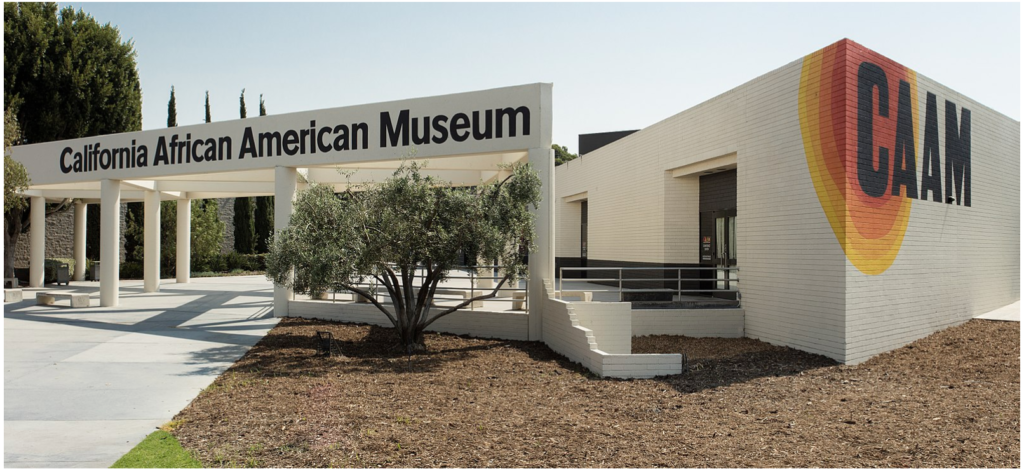
Photo by Brian Forrest, Courtesy of Creative Commons
Founded in 1977, The California African American Museum (CAAM), is the result of a determined campaign by visionary founders and community members. CAAM is the first museum, fully supported by a state. With its establishment, the State of California recognized and celebrated the invaluable contributions of African Americans to the cultural, economic, and political development of the American West.
The museum’s first acquisition was a magnificent bronze bust of civil rights activist Dr. Mary McLeod Bethune, by renowned artist Richmond Barthé. The museum boasts a permanent collection of 5,000 objects encompassing landscape paintings, portraiture, modern and contemporary art, historical items, traditional African art, and mixed-media artworks. CAAM focuses on both California and the American West while also expanding its collection to feature art from the African diaspora art and significant works by African American artists worldwide.
In 1984 the Museum relocated to its permanent residence in Exposition Park, nestled just south of Downtown Los Angeles. This 44,000-square-foot facility, was designed by esteemed African American architects Jack Haywood and Vince Proby. CAAM stands proudly alongside other renowned institutions in Exposition Park, including the California Science Center, the Natural History Museum, and the upcoming Lucas Museum of Narrative Art.
Interesting Fact: The Museum is getting an upgrade and will be closed until August 5.
5. The Museum of African American Art, Los Angeles
The Museum of African American Art (MAAA) in Los Angeles encourages its visitors to experience the arts from an African American perspective. Founded in 1976 by esteemed artist and art historian Dr. Samella Lewis, alongside a collective of academic, artistic, business, and community leaders, MAAA fosters a profound appreciation for the arts from an African American perspective. As an educational and cultural institution, the museum is dedicated to interpreting, promoting, and preserving art created by or representing individuals of African descent, highlighting their remarkable contributions to global culture. The museum’s overarching mission is to enhance public awareness and support for African American art, making it an integral part of our collective heritage.
The Palmer C. Hayden Collection is a central part of the permanent collection at MAAA, giving the public insight into the life and work of one of the leading artists of the Harlem Renaissance. The Palmer C. Hayden Collection includes the John Henry Series, a narrative art series of 12 oil paintings by Palmer C. Hayden illustrating the story told in the Ballad of John Henry. The permanent collection at MAAA includes works from the United States as well as paintings, masks, batiks, carvings, and ceremonial objects from Africa, the Caribbean, the South Pacific, and South America.
Interesting Fact: The museum has been located at 4005 Crenshaw Boulevard, a landmark building at the intersection of Crenshaw and Martin Luther King Jr. boulevards since it opened its doors. Currently under renovation, MAAA will exhibit in a temporary space inside Baldwin Hills Crenshaw Plaza.
Washington, D.C.
6. The Smithsonian
The National Museum of African Art: The Smithsonian

Photo by Another Believer Courtesy of Creative Commons
The National Museum of African Art (NMAfA) was established in 1964 to promote cross-cultural understanding in the social sciences and arts and is located on the National Mall in Washington, D.C. Originally named the Center for Cross Cultural Communication, as a private institution founded by Warren M. Robbins. In August 1979, the Museum became part of the Smithsonian Institution and was formally renamed the National Museum of African Art in 1981. NMAfA officially opened to the public in 1987.
Initially focused on the traditional arts of sub-Saharan Africa, NMAfA has expanded its collections to include both modern and contemporary art, with over 13,000 works of art and 300,000 photographs that span more than 1,000 years of African history and includes a variety of media from across the continent. NMAfA was not only the first institution dedicated to African art but also has the largest collection in the United States.
At NMAfA visitors are treated to a remarkable diversity of artistic traditions from across the continent. The museum’s programs cater to audiences of all ages, offering a multifaceted perspective on Africa’s artistic heritage. They share their commitment to the community with programs such as Artist talks, film screenings, Let’s Read about Africa, Studio Africa, cooking demonstrations, and lectures.
Interesting fact: Founder Warren M. Robbins was an American Foreign Service officer, who in the 1950’s purchased 32 pieces of African art from antique shops in Germany. The museum was at one time located on A Street NE in Capitol Hill in a townhouse that had been the home of Frederick Douglass (newspaper editor, abolitionist, author, statesman).
The National Museum of African American History and Culture: The Smithsonian

Photo by Alan Karchmer, Courtesy of Smithsonian Institution
After almost 200 years, the National Museum of African American History and Culture (NMAAHC) was established by an Act of Congress in 2003, following decades of efforts to promote and highlight the contributions of African Americans. It is the only national museum devoted exclusively to the documentation of African American life, history, and culture. The Museum opened to the public as the 19th museum of the Smithsonian Institution with a ceremony led by President Barack Obama on September 24, 2016. Ranking as one of the most visited Smithsonian museums, NMAAHC is a community resource that provides an opportunity to explore and revel in African American history and culture.
The Museum’s art exhibition illustrates the critical role that African American artists played in shaping the history of American art and how the art represents various aesthetic styles, reflects national and world events, and establishes new artistic trends and theories. Works include paintings, sculpture, works on paper, art installations, mixed media, photography and digital media. The art galleries entitled, Visual Art and the American Experience feature seven thematic sections and one changing gallery. The exhibit is complemented by a multi-media platform, with 14 iPads, portable tablet devices that can be rented from the museum; and downloadable applications for smartphones and personal tablets, that allows the audience to delve deeper into the history and relevance of the artists and artworks.
The impressive 350,000 square foot, 10 story building was the vision of Lead Designer Sir David Adjaye (MCA Denver, Nobel Peace Center in Oslo), Lead architect Philip Freelon (Reginald F. Lewis Museum of Maryland, Gantt Center and MoAD), J. Max Bond Jr. (Schomburg Center for Research in Black Culture) and the architectural team of Freelon Adjaye Bond/SmithGroup. The architect’s collaboration on the building’s design and structure is a beautiful synthesis of distinctive elements from Africa and the Americas.
The building’s structure is what the designers call a “Corona”. The inspiration for the tiered exterior came from one of the sculptures in the museum’s collection, a multiple-foot-tall depiction of a crowned man carved by late revered Nigerian artist Olowe of Ise. With the building’s ornamental bronze-coated lattice-like mesh, Adjaye pays homage to the intricate ironwork crafted by highly skilled African-American casters from Louisiana and the South.
Interesting fact:
This building is the first museum on the Mall designed to sustainability standards, serving as the Smithsonian’s ‘Green Flag.’ In 2018, the museum was officially awarded LEED Gold Certification. The museum received substantial donations from corporate and even some famous Donors.
Georgia
7. Spelman College Museum of Fine Art
The Spelman College Museum of Fine Art, a member of the AUC (Atlanta University Center), was established in 1996 and is located on the campus of Spelman College in Atlanta, Georgia. The Museum was founded by a group of arts faculty who believed that visual art plays a vital role in the intellectual growth and development of students. With its unwavering commitment to Black women artists, the museum’s mission is to “inspire and enrich the Spelman College community and the general public, through art by and about women of the African Diaspora.”
The Spelman College Museum of Fine Art continues to be recognized for its innovative and mission-focused exhibitions. The Museum’s collection includes numerous works of art by emerging, mid-career, and established artists from around the world. Holdings include works by celebrated artists such as Calida Rawles, Elizabeth Catlett, and Sheila Pree Bright. The collection spans a wide range of media, including painting, sculpture, photography, and video. The Museum is committed to further enhancing the viewer’s experience with lectures, gallery walks, panel discussions, and a variety of other interpretive programs.
Past exhibits include, Bearing Witness: Contemporary Works by Black Women Artists (1996), Cinema Remixed & Reloaded: Black Women Artists and the Moving Image Since 1970 (2007), Maren Hassinger. .. Dreaming (2015), and Deborah Roberts: The Evolution of Mimi (2018) to name a few. It also presents original projects such as Hale Woodruff, Nancy Elizabeth Prophet, and the Academy (2007) that examine the Atlanta University Center’s profound legacy.
Interesting fact:
Spelman’s current holdings began in earnest with the acquisition of a series of linocut prints by Hale Woodruff (1900 – 1980) who established the Atlanta University Center’s (AUC) art department in 1931 and “was responsible for that department’s frequent designation as the École des Beaux Arts”…(per the Smithsonian) The linocut series depicts the historical buildings on the grounds of the AUC campuses.
While in Georgia check out: Hammonds House Museum (HHM), High Museum of Art
North Carolina
8. The Harvey B. Gantt Center for African-American Arts + Culture in Charlotte
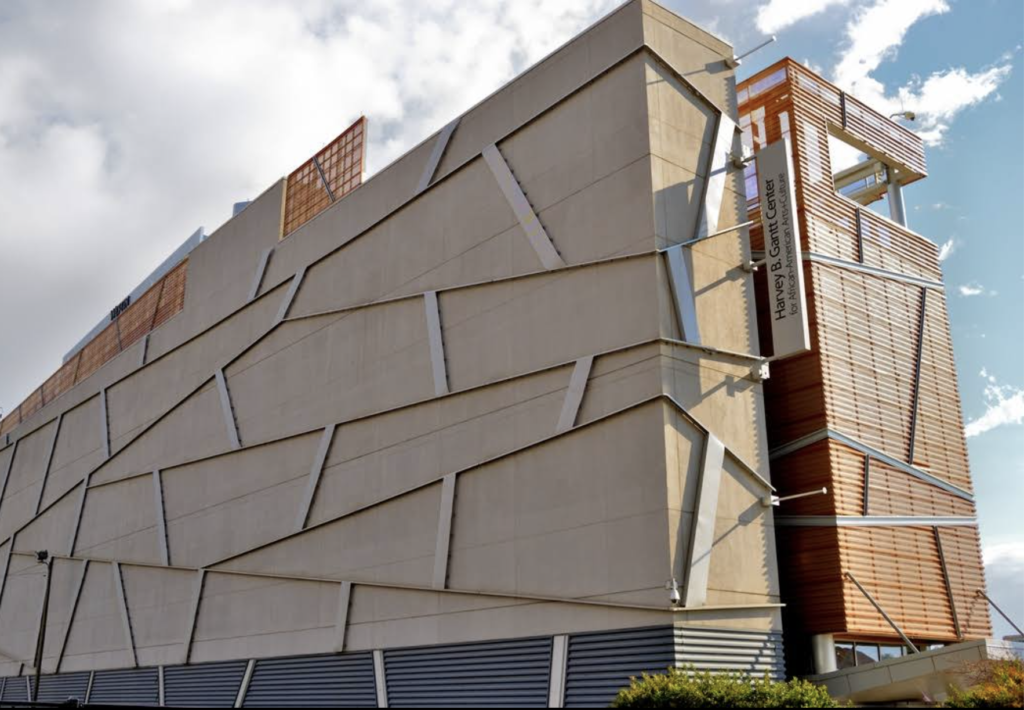
Located in the heart of Uptown Charlotte, N.C., the Harvey B. Gantt Center for African-American Arts + Culture grew from the Afro-American Cultural Center (AACC) which was founded in 1974. The official opening of the new facility named after Harvey B. Gantt, a well-respected community leader and businessman. He was a trailblazer as the first African American student admitted to Clemson University and as Charlotte’s first African American mayor.
Spanning an impressive 46,500 square feet, the Gantt Center is a celebration and recognition of the best in visual, performing and literary arts reflecting the African diaspora. The Museum is a hub for a wide range of artistic expressions, including music, dance, theater, visual art, film, literature, arts education programs, and community outreach. With a deep commitment to presenting, preserving, and celebrating excellence in the art, history, and culture of African-Americans and people of African descent, the Gantt Center seeks to ignite engaging conversations that inspire, empower, and enlighten. Mecca of Digital Arts (MODA)
After touring for 10 years the Gantt Center became the permanent home of the Hewitt Collection of African American Art. The collection is an assemblage of 58 works celebrating the expression and passion of twenty master artists, including Charlotte native Romare Bearden, Hale Woodruff, Jonathan Green, Ann Tanksley, Jacob Lawrence, Elizabeth Catlett, and Henry Ossawa Tanner. The Hewitts were newlyweds when they bought their first piece of art, a Picasso reproduction.
Interesting Fact: The Gantt Center was designed by The Freelon Group (Phil Freelon) who also designed the NMAAHC. The Firm won the 2009 Thomas Jefferson Award for Public Architecture from the American Institute of Architects for projects that included the Gantt Center. The exterior design pays homage to the quilt making tradition, creatively juxtaposing metal panels and windows, with the fluorescent lights acting as the stitches. The Freelon Group also honored the memory of the Myers Street School with a modern interpretation of their “Jacob’s Ladder” exterior stairs. The Myers School was Charlotte’s only public school for African-Americans from the late 1800s to 1960s. It was located in the heart of the old Brooklyn neighborhood, an African American area that was demolished in the 1960s, as part of an urban renewal program.
Pennsylvania
9. The African American Museum in Philadelphia
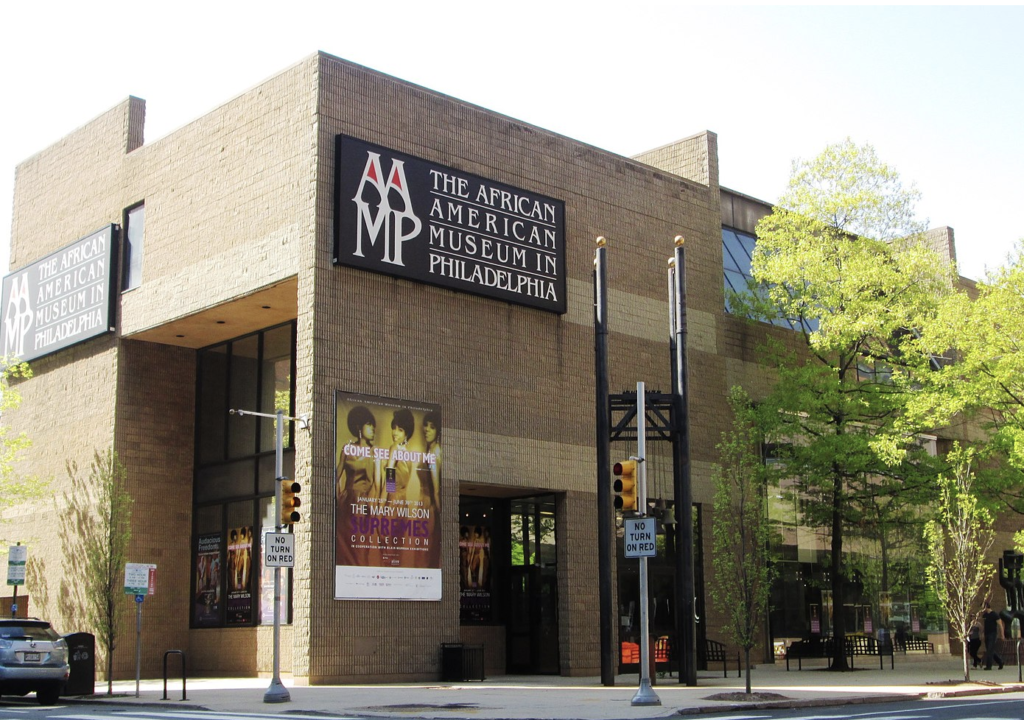
Photo Beyond My Ken, Courtesy of Creative Commons
The African American Museum in Philadelphia (AAMP) is located in the City’s Historic District. It was founded in 1976 in celebration of the nation’s Bicentennial. AAMP is the first institution funded and built by a major municipality to preserve, interpret and exhibit the heritage of African Americans. Through its collection the Museum has played a pivotal role in sharing the achievements and narratives of African Americans from pre-colonial times to the present.
AAMP’s Collection more than doubled thanks to a generous gift of over 400 African artifacts from the Philadelphia Civic Center Museum. The objects include weapons, tools, ceremonial objects, textiles, household goods and musical instruments. In addition to the artifacts from West Africa, the collection contains a small selection from Tunisia, including jewelry, leather footwear, harnesses, cushions, and trays.
Jack T. Franklin (1922-2009), a photographer for the United States Army during World War II, donated his collection of over 500,000 negatives and photographs to the African American Museum. The extraordinary collection is not only a time capsule of all of the major events of the 1960s Civil Rights movement but also local history comprising virtually every social, cultural and political event in Philadelphia’s African American community.
Interesting Fact:
Franklin photographed many notables including Thurgood Marshall, Muhammad Ali, Dr. Martin Luther King, Jr., Coretta Scott King, Malcolm X, Sidney Poitier, Julie and Harry Belafonte, James Baldwin, Sammy Davis, Jr., Lena Horn, Smokey Robinson and The Miracles, Aretha Franklin, James Brown, Patti LaBelle, Stevie Wonder, Sam Cooke, The Jackson 5, Nat King Cole, Josephine Baker, Duke Ellington, Count Basie, The Dixie Hummingbirds and The Ward Singers.
Washington
10. Northwest African American Museum

Photo by Joe Mabel, Courtesy of Creative Commons
Northwest African American Museum (NAAM), is located in the heart of Seattle, and situated adjacent to Jimi Hendrix Park, in Washington’s historically African-American Central District neighborhood. NAAM is dedicated to presenting and preserving the connections between the Pacific Northwest and people of African descent. Through its thought-provoking exhibitions, engaging programs, and exciting events, the museum shines a light on the Black experiences in America.
The concept of a northwest museum was initiated in 1981 through the collective efforts of activists, community members, and artists. After 25 years of perseverance and determination, NAAM was opened to the public on March 8, 2008. Inside NAAM, you’ll find 17,000 square feet of floor space, the museum boasts a bookstore/gift shop, galleries for temporary and permanent exhibitions, and spaces available for public rentals.
Current and past exhibitions from artists residing in the Pacific Northwest include “Colors of Life: African American Abstract Art and the Regathering of Community.” Featuring the abstract artworks of four talented artists: Vincent Keele, Shantell Jackson, Lo Mar Metoyer, and Yeggy Michael and “Freedom of Expression” showcasing the visual artistic expressions. In addition to its exhibits, NAAM offers a diverse range of programming and events. Such as the Dr. Carver Gayton Youth Curator Program.
Interesting Fact:
In 2003, the Urban League purchased the Colman School, a City of Seattle landmark constructed in 1909. The transformation of the building into a museum was led by the team at Donald King Architects (DKA), a local black-owned architecture firm. Rico Quirindongo, the lead architect on the project, orchestrated a redesign that seamlessly combines a museum on the ground floor with 36 affordable apartments on the upper levels.
